White Whole Wheat Bread Recipe
This page contains affiliate links. For more information please read my Disclosure Policy.
This white whole wheat bread recipe is a soft, homemade whole grain white bread ideal for sandwiches, toast and more! A combination of white whole wheat flour and bread flour result in a lovely, light bread that slices beautifully.
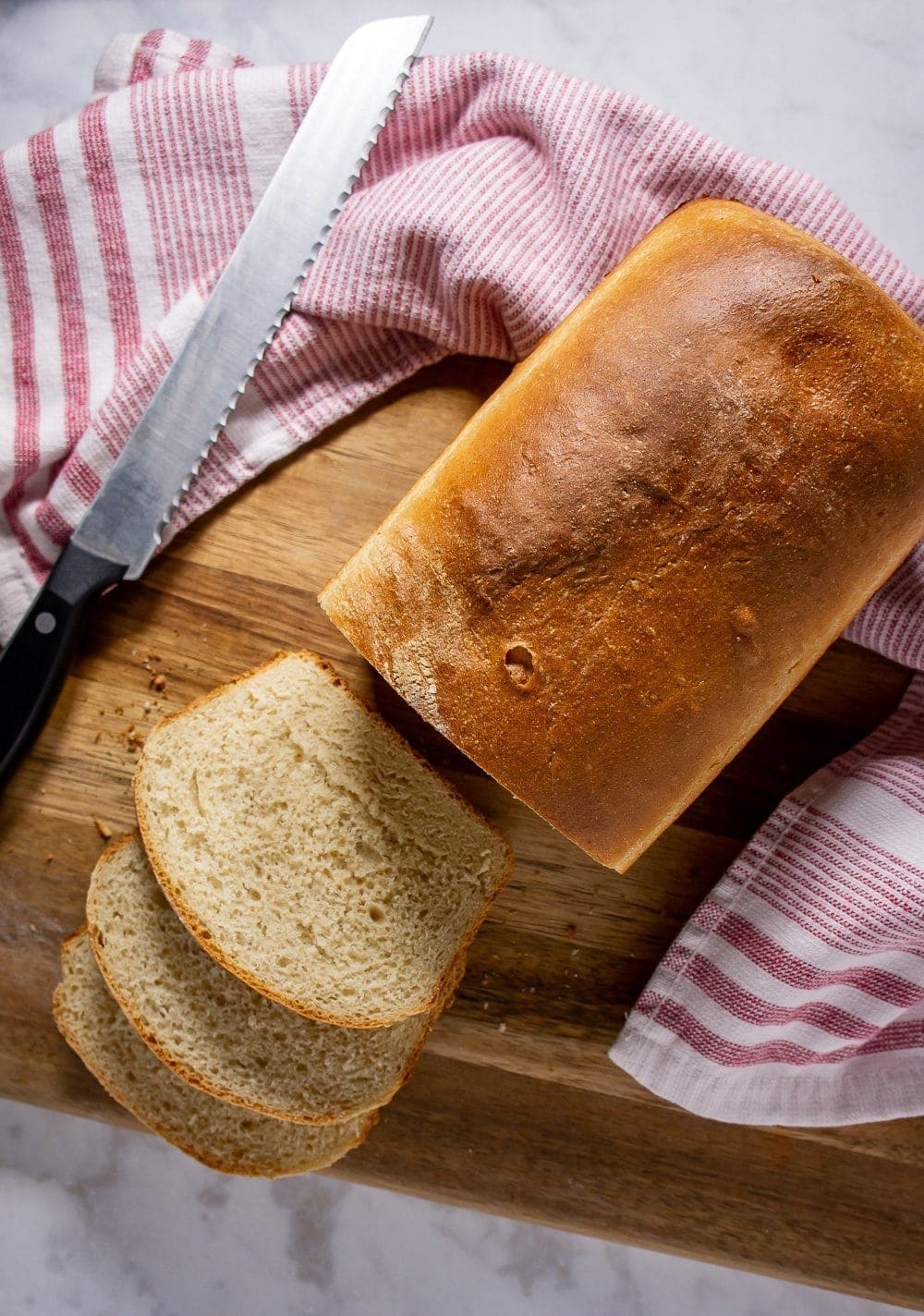
I love bread. I love kneading bread, the slow rise of the dough and the smell of fresh bread filling the house. I make it A LOT. I’ve shared some fun recipes like Garlic Bread Rolls and Asiago Cheese Bread. But I figured it was probably good share a staple in my house, a simple, but delicious White Whole Wheat Bread recipe that has held together many a sandwich in my kitchen. I typically rotate between it and my Honey Wheat Sandwich Bread to mix things up.
It’s a simple combo of flours and basic bread ingredients and it’s a delicious mix of white bread and whole wheat bread. Some of the nutrition of whole grain bread, with the appearance of white bread. Your kids will never know…
Wheat Bread vs. White Bread
I know, this bread looks like white sandwich bread, but it’s not! One third of the flour is made up of a white whole wheat flour. But what really is the difference?
Simply put whole wheat flour is just that, whole. Unlike white flour, which is heavily refined, whole wheat flours still contain the germ and the bran, meaning they have a lot more nutritional value, and in my opinion, flavor. White whole wheat is simply a whole grain flour made from white wheat berries. Your typical whole wheat is made from red wheat berries that aren’t as sweet.
So if wheat flour is so much better, why use any refined flours in this recipe? The fact of the mater is that I’ve yet to get a wheat flour to behave like my white flours do. A combination creates a happy texture, flavor, and rise.
Ingredients For Sandwich Bread
Like most breads, this loaf of homemade sandwich bread is a simple combination of easy to find, common ingredients.
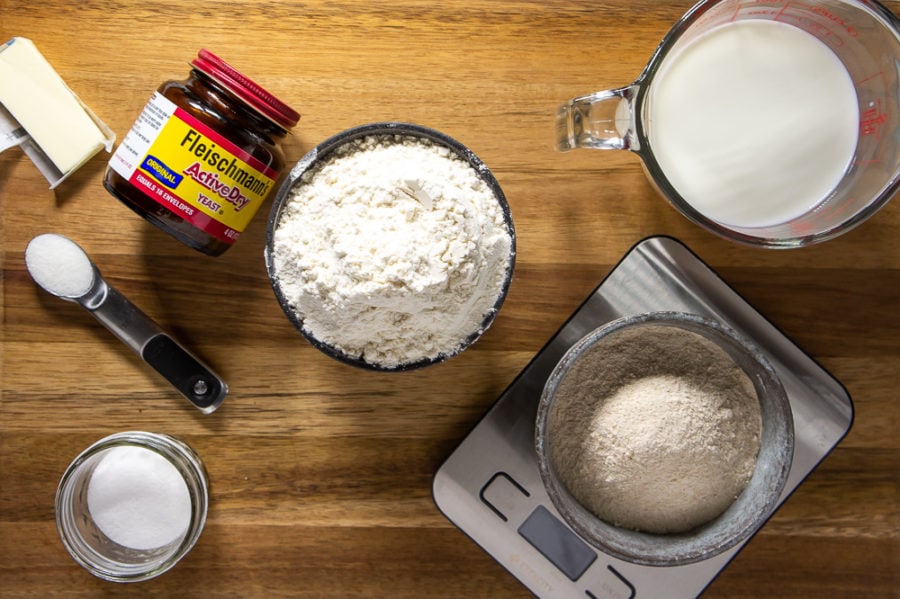
- Bread Flour – 2/3 of the flour for this recipe, and essential for developing the strong gluten that gives the bread it’s texture.
- White Whole Wheat Flour – White whole wheat gives the bread an added natural sweetness that whole wheat flours don’t otherwise have, and it’s the reason this loaf still looks like a classic sandwich loaf.
- Salt – ALWAYS, just always.
- Sugar – Just a bit helps the yeast thrive, and adds flavor.
- Yeast – Creates all that lovely air!
- Butter – Fat equal richness and helps with texture.
- Milk – I like milk for it’s added richness and flavor in this homemade sandwich bread.
How to Make Whole Grain White Bread
As with most bread recipes, the hardest part is the waiting! While this recipe does require some mixing and kneading, it’s all very simple and I’m going to walk you through every step!
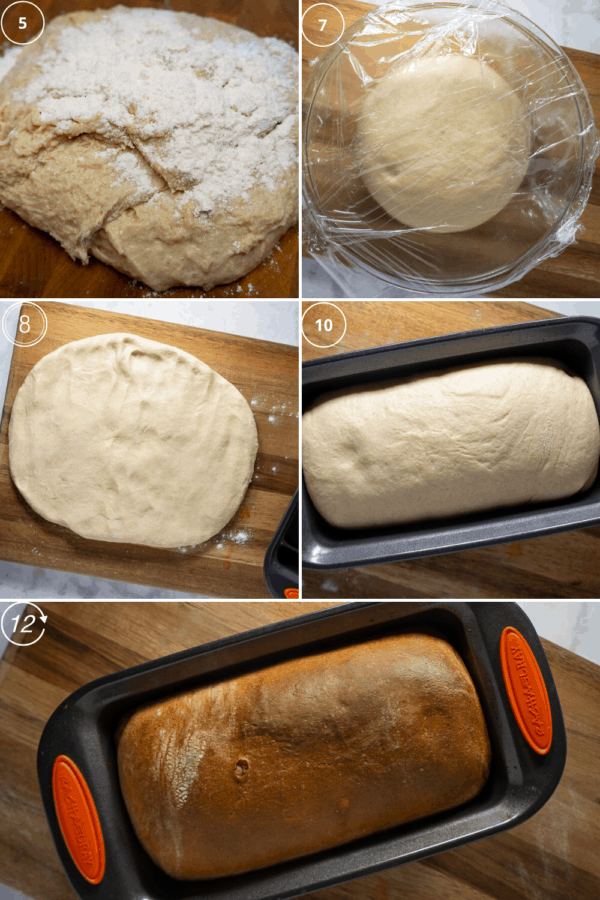
- Heat your milk to lukewarm, a max of 110°F, like a baby’s bottle. Add in half the sugar, stir, and then the yeast, stir again. This will activate your yeast, and get very bubbly and foamy in about 5 to 10 minutes.
- Melt your butter, and set aside to cool slightly. Then mix all of your white whole wheat flour, and the same amount (5 ounces, a cup plus two tablespoons) of bread flour in a bowl and set aside.
- If you don’t own a kitchen scale, but like to bake….INVEST. Accuracy, ease, and consistent baking is enough to be worth a 12 dollar scale!
- In a large mixing bowl, or the bowl of your stand mixer, pour in your proofed (foamy) yeast. Add in the remaining half of the sugar, salt, and the melted butter. Stir together.
- Add in your bowl of combined flour. Either by hand or with your stand mixer, fitted with a dough hook, on low, fold the dough together until all the flour is absorbed.
- The dough will still be sticky, so add in the remaining bread flour a few tablespoons at a time and knead until the dough is tacky, but no longer sticks to the bowl or your hands. This is up to about 2/3 cup but you may not need it all.
- Turn out your dough onto a lightly floured work surface, and begin to knead it. Push forward with the heels of your hands then fold it back on itself. Turn the dough and repeat. Continue this for about 10 minutes, or until you have a smooth soft ball of dough.
- Place in a large, lightly greased bowl and cover with plastic wrap or a clean kitchen towel. Let rise until doubled in size, about 1 hour.
- When your dough has risen, gently punch it down and turn it out onto a clean work surface. Press the dough with your hands to form a rectangle. The dough should be pliant and soft. If it snaps back when you push it, let it rest for 10 minutes and try again.
- Starting on the long side, roll your dough up into a cylinder, keeping it as tight as possible without squeezing the dough.
- Place your rolled up dough into a 9×5 loaf pan. Cover and let rise again until doubled or puffy and higher than the edge of the pan, anywhere from 45 minutes to an hour.
- Preheat your oven to 350°F after about 35 minutes. When your dough has risen fully, brush the top gently with a little milk and place in the preheated oven.
- Bake for 35 minutes, or until golden brown.
- Remove from oven and carefully tip the pan onto a cooling rack to remove the bread loaf from the pan. Quickly turn the bread right side up, and allow to cool completely before slicing.
- Slice as needed and store remaining bread in an airtight container for up to 4 to 5 days. Or, freeze for up to 4 months.
Pro Tip: Kneading is essential to this recipe. By pushing and pulling the dough you’re working the flour and creating gluten bonds that hold the bread together. Knead too little and you won’t have the close textured crumb of sandwich bread.
Step 6 – Bake!
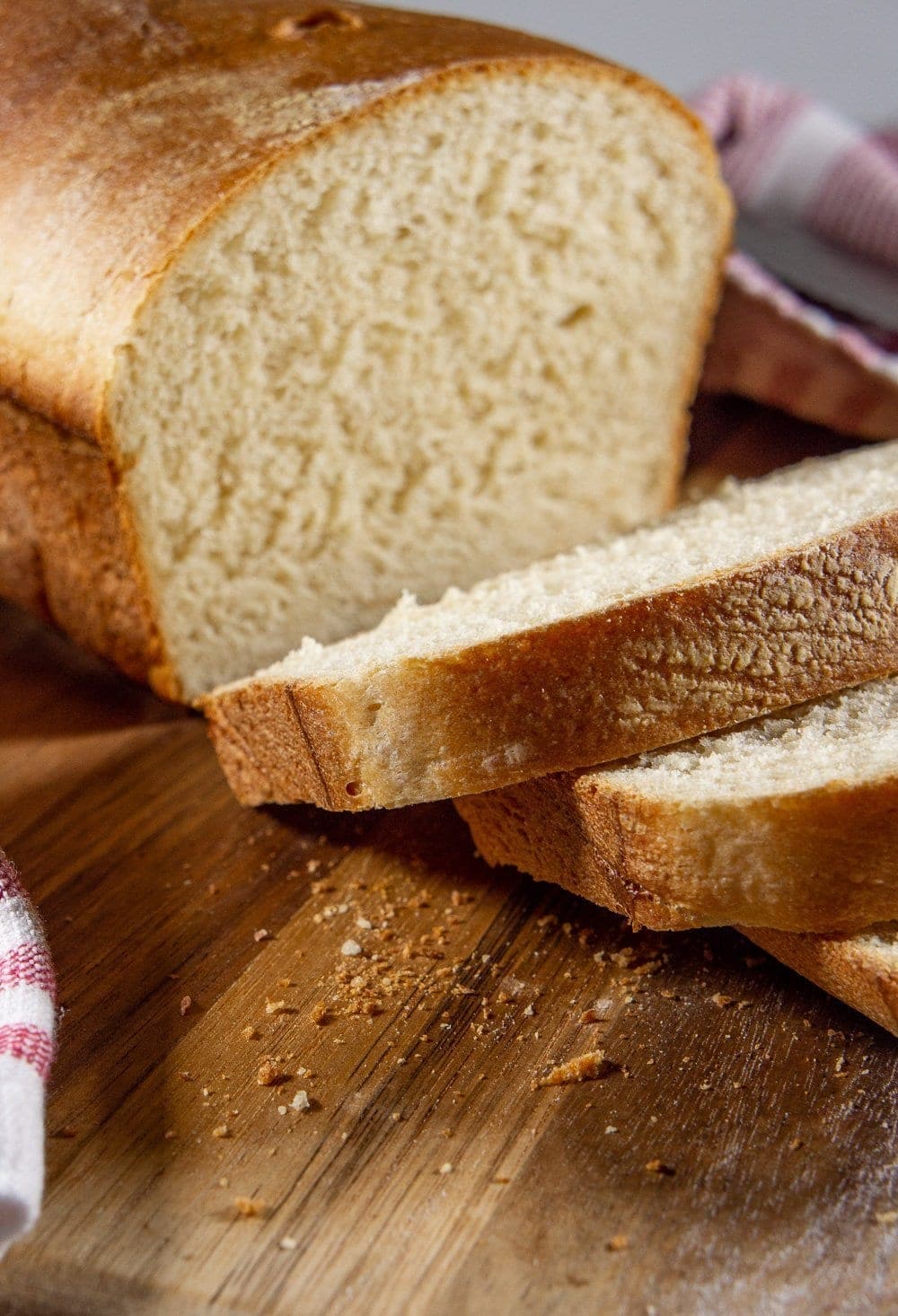
FAQ’S
Yes! It won’t have the pure white bread appearance, and may have a slightly nuttier flavor, but it’s perfectly delicious to use as a 1 to 1 replacement.
Yes! I’ve made it both with milk and water. I do think milk provides a richer flavor, but water won’t ruin the bread flavor or texture. If prefer to use no milk at all, you’ll have to brush the top of the bread with something else, like an egg wash.
The egg wash can be made with 1 egg beaten with 1 tablespoon of water.
You can also use non-dairy milks, but please be advised that they will affect flavor of the final result.
In the years before pasteurization this was true. Bacteria, proteins, and some enzymes present in natural milk can inhibit the growth of yeast. Scalding the milk, or bringing it to a point of steaming, but not boiling, kills the bacteria, denatures the proteins, and stops those pesky enzymes from getting in the way of yeast.
Nowadays the pasteurization process most of our milks go through solves this problem for us and we can skip the scorching step. However, if you use unpasteurized milk, please follow this guide to scalding milk. Then allow it to cool to at least 110°F before adding your yeast.
Yes! If you’re not a fan of weekly bread baking like myself, go ahead and double away. You’ll need 2 loaf pans of course to baking at the same time. If you don’t have 2 pans, and would still like to double this recipe, you’ll have to take an extra step.
Divide the dough in half after the first rise. Shape both, place one in the pan, and the other wrapped in plastic in the fridge. Follow the recipe for the first loaf. Once your first loaf is out and cooling, let the loaf pan cool and then add the refrigerated dough to it. Let it rise at room temperature, probably closer to 1 1/2 hours since the dough is cool, and then bake as directed.
Let the bread cool completely, then wrap it in plastic wrap. Slide the wrapped loaf into a plastic bag, or wrap with freezer paper, and freeze. It will keep in the freezer for up to 4 months.
To use, simply remove from the freezer, unwrap, and leave on the counter until thaw. Then store in an airtight container for 4 to 5 days.
I don’t recommend baking this in the bread machine, but you can use it to make the dough. Simply follow your bread machine’s instructions for adding ingredients then set it to the dough cycle. When it’s done, remove and shape, then bake as directed.
Yes, you can use instant yeast. Replace the active dry with instant 1 for 1, then skip the activation step in warm milk. Instead, simply add the yeast, salt, and sugar to the flour. Then add in the milk and melted butter. Mix as directed.
Enjoy!
Now you have a healthier, satisfying homemade sandwich bread recipe in your back pocket. It makes lovely french toast, especially if you slice it thick, but I also like enjoying any of the following recipes with it! Have fun, and as always Happy Eating!
- Apple Pecan Chicken Salad
- Homemade Nut Butter
- Homemade Strawberry Jam
- Homemade Pomegranate Jelly
- Homemade Loquat Jam
- Pear Butter
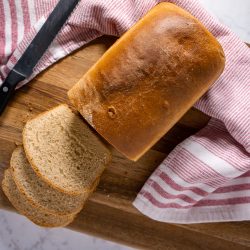
White Whole Wheat Homemade Sandwich Bread
Ingredients
- 10 oz whole milk + 1/2 tbs for brushing
- 1 1/2 tsp active dry yeast
- 2 tbs granulated sugar
- 1 tbs butter, melted plus extra for greasing the rise bowl
- 1 1/2 tsp salt
- 5 oz white whole wheat flour about 1 cup
- 9.5 oz bread flour about 2 cups, minus 2 tablespoons
Instructions
- Microwave milk to between 95°F and 110°F. Add in yeast and 1 Tbs of sugar, stir and let sit until yeast is foamy and bubbled on top. About 5 minutes.
- Meanwhile, melt butter and set aside. Measure white whole wheat flour and 5 ounces (about 1 cup) of bread flour into a bowl of a stand mixer* with the salt and remainder of sugar.
- When yeast/milk mixture is ready, add it to the flour mixture with the melted butter. Fit stand mixer with a dough hook and turn on to medium speed until dough comes together in a sticky shaggy dough.
- Begin adding remainder of bread flour 1 to 2 tablespoons at a time until dough pulls away from sides of bowl.
- Lightly flour a clean work surface and your hands, and turn dough out onto surface. Begin kneading by pushing down and out with the palms of your hands. Rotate and fold and repeat. The dough will become less sticky as you knead, simply flour board and hands if dough sticks too much to handle, but do not over flour.
- Knead until dough is smooth and elastic, but slightly tacky. Grease a large bowl with a little bit of butter (or oil) and form dough into a ball. Place in bowl, rotate it to coat all sides with grease, and cover with plastic wrap. Rise until doubled, 45 mins to 1 hour.
- Get loaf pan ready by a lightly floured work surface. Turn dough out onto surface and gently press into a rectangle the same length as your loaf pan, and about 6 inches wide. Try to keep the dough even thickness.
- Roll dough up from the long edge, keeping it tight. Place dough into the loaf pan and cover with plastic wrap. Let rise until peeking up over the edge of the pan, about 45 minutes to 1 hour.
- After 35 minutes, preheat oven to 350°F. Check dough at 45 minutes, dough should fill out the pan, and when gently touched have a bit of resistance, but not feel dense. If needed let rise longer. When ready, brush top of loaf with reserved milk.
- Place in oven on middle rack and bake for 35 minutes.
- Remove from oven, and carefully remove from loaf pan immediately onto a cooling rack. Allow to cool completely before slicing or storing.
- Store in a plastic bag in a cool cupboard for up to 5 days. When slicing use a sharp serrated knife.
Notes
Nutrition
Originally published 7/28/2019, Updated 3/31/2020
Nutrition information and cooking times are provided as a best estimate. Values may vary based upon ingredients and equipment.

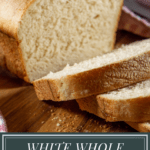
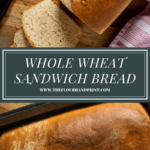

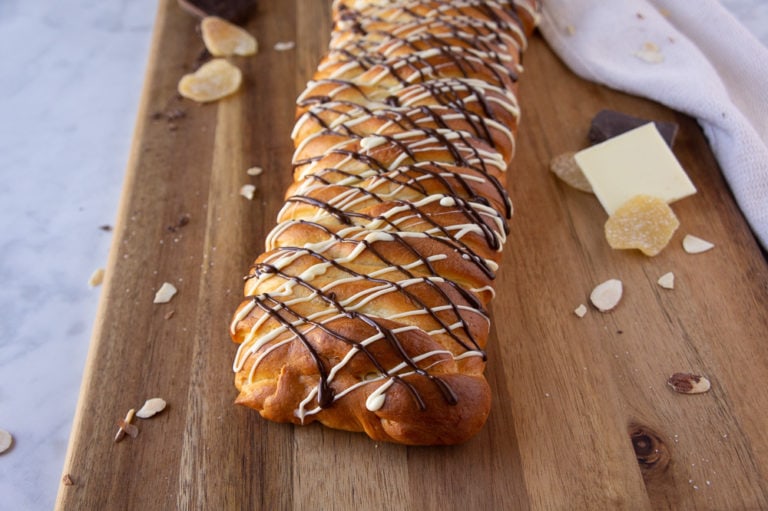
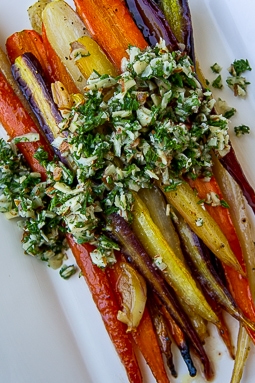
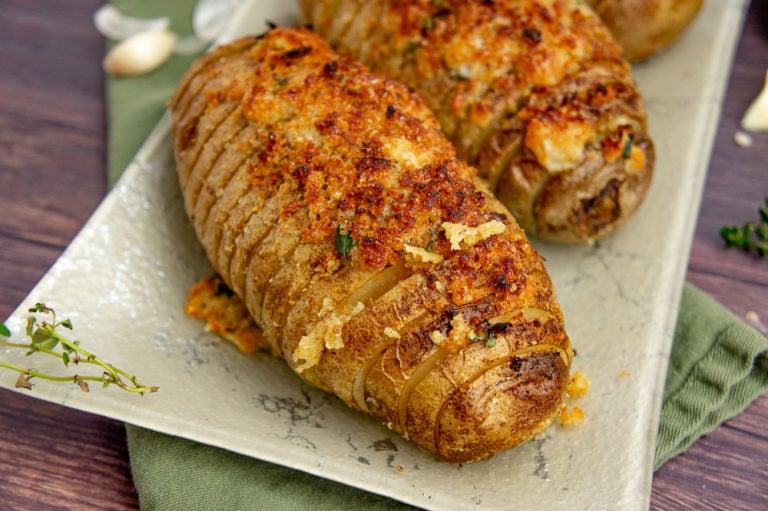
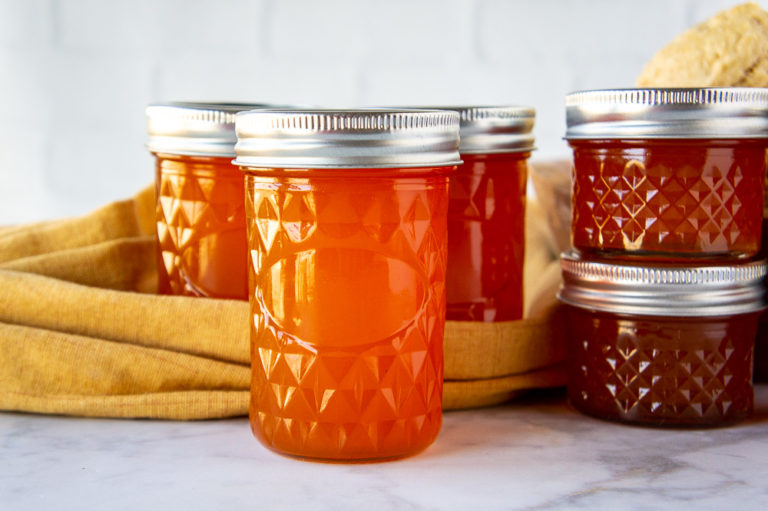
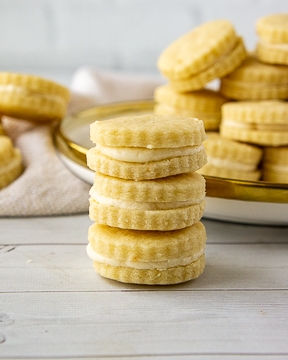
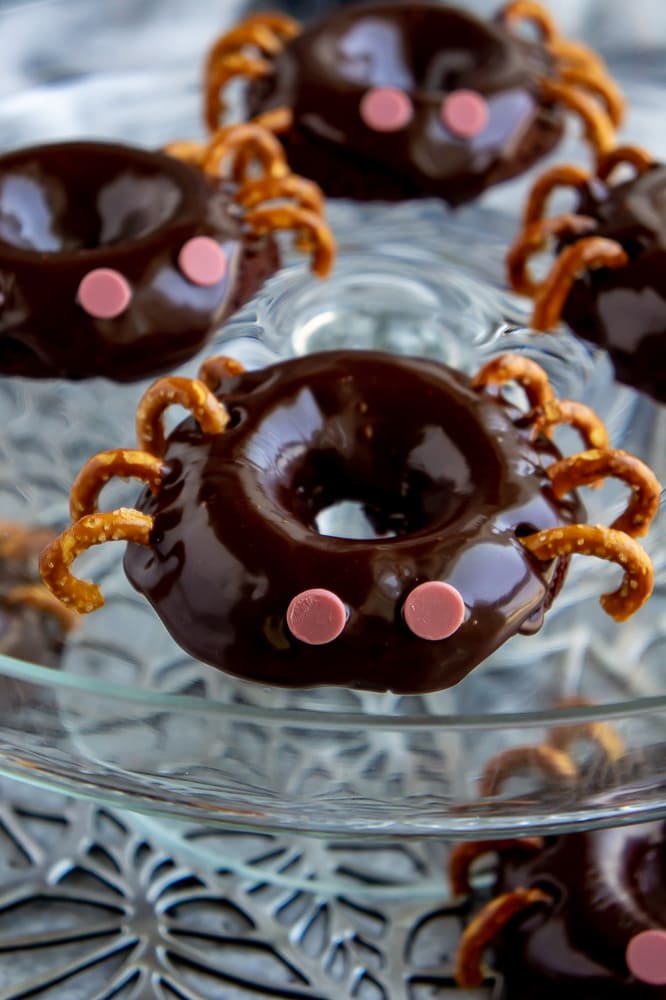
All your measurements are off . 19 oz of bread flour is 1.188 lb. Way more than 5 cups of flour. Now I have to figure all on my own. Terrible mistake I was trying to double the recipe. Even not doubling you are off. I’m using the cups and the weights at the same time
I never want anyone to be frustrated making a recipe, but I’m afraid I have to disagree. I double this recipe quite often.
The confusion is usually when someone is not used to measuring flour by weight. If you spoon flour into a standard 1 cup measuring cup if weights about 4.5 ounces. Bread flour and wheat flour are more dense and are a little heavier per cup. To double it you need about 2 cups of white wheat flour and 3 3/4-4 cups of bread flour. Grams seem to be easier to understand so I’m working on updating all of my recipes so this confusion clears up. To use grams you’d 450-480 grams of bread flour and 270 of wheat flour.
Hope this helps.
Question: Why not let the stand mixer with dough hook do all the kneading?
Hi Kate, You can use the stand mixer and the dough hook. I’ve just always found that the dough hook on the standard stand mixer doesn’t knead as uniformly as my two hands do, and it’s important in order to create that sandwich bread texture. If you’d prefer to use it the entire time, continue to let the mixer knead on medium low for 5-7 minutes after the dough pulls away from the side of the bowl. You might want to stop it and flip the dough so it’s evenly worked.
why does the recipe ingredients call for 2 Tablespoons of sugar…recipe method only mentions 1 Tablespoon???
Sheila, I’m glad you reached out with your question, I also received your second comment when you found the second Tablespoon use, and please no apology needed, I can’t tell you how many times I have myself missed a notation in a recipe.
Just baked a loaf for the first time using this recipe! Looks and smells delicious! Love this recipe as I am wanting to use my bread flour and wheat flour together! Thanks for the recipe!
You’re welcome, I am so glad you have the recipe now to use both your flours together, homemade bread always beats a store bought loaf!
Delicious and very do-able. Thanks!
Glad to hear it, enjoy! Thanks Susan!
I made this bread and I absolutely loved it! I am going to use this same recipe and make rolls for dinner. Any concerns or changes you would make to the dough recipe?
I think the dough will work just fine for you Josh! I often do the same thing, you will likely have to adjust your bake time, I’d start at about 15 minutes put possibly up to 20 or so. To check if they’re baked you can tap the bottom of the rolls, as long as they sound hollow, they should be good to go! I’m so glad you liked the loaf and I hope your rolls turn out well, I’d love an update on how it goes!
I am confused about the flour measurements, you say 5 oz. of white whole wheat flour – about 1 cup (but 1 cup is 8 oz, not 5 oz).
Also, you say 9.5 oz bread flour about 2 cups, minus 2 tablespoons- (2 cups would be 16 oz, and 2 tablespoons is only 1 ounce).
Hi Linda,
Thanks for reaching out with your question! So you’re correct 1 cup would equal 8 ounces if we were talking about water. When it comes to weight measurements for baking, the same volume measurement (1 cup for instance) can have a vastly different weight depending on the ingredient. 1 cup of sugar weighs 7 ounces, 1 cup of flour weighs about 4.5 to 5 ounces depending on the flour, while 1 cup of milk or water will weigh 8 ounces.
I choose to bake with weight rather than volume most often because its more consistent. Different measuring cups, if you scoop flour rather than spooning it into your measuring cup, or how packed your flour is in its container could all change the recipe if we went with volume measurements. I try to provide a best estimate for my readers who don’t have a way to weigh their ingredients. For this recipe, spooning flour into a 1 cup measuring cup twice then leveling it with a knife and removing 2 loosely packed tablespoons is about right for the amount of flour I used.
I hope this clarifies any confusion! Happy baking!
Hi Linda,
This is the difference between a liquid measuring cup and a dry measuring cup. You are thinking of liquid measurements. Don’t use your liquid measuring cups for measuring out your dry goods, flour, sugar, etc. or the recipes will have issues. I have a scale that zeros out the weight of the container, such as a bowl or cup, so it is nice that this recipe gives the weight of the flour as well as the measurements, incase I just decide to use a bowl. Hope this helps.
Hi Dee, I so appreciate your helpful advice for fellow bakers! It’s true that measuring dry foods in liquid measuring cups would lead to incorrect amounts for the recipe! But different ingredients will still have different weights, even measured with a dry measuring cups. 1 cup of flour for instance weighs 4.5 ounces, while one cup of sugar weighs 7.5 – on average at least IF they’re measured by spooning the ingredients into the cup. If you scoop compacted flour out of the container with the measuring cup instead, it can be so packed in that it weights 6 or more ounces, which can really affect the recipe as I’m sure you can imagine! That’s why I recommend using a scale (glad you have one!) to make sure you use the perfect amount each time, no guesswork involved. I hope you give this recipe a try, and happy baking!
This looks so perfect! I adore homemade bread, there’s nothing better than that aroma that fills the kitchen when cooking your own!
The smell is almost the best part – until you taste it right!
Yum! What a great recipe! It looks amazing!
Thank you Farah!
Nothing beats homemade bread. Your step-by-step guide is easy to follow even for beginners. Thanks for sharing.
Homemade is best! Glad you found the post helpful 🙂
I don’t make bread at home often enough, probably because I have no self-control and would demolish a whole fresh loaf without even thinking. I love the sound of this!
Haha! I know the feeling, I’m not going to lie and say that hasn’t happened ;), when you decide it’s time, I hope this recipe is one you’ll try!
I love homemade bread! It’s so much more delicious than store bought. Looks absolutely perfect!
Thanks Natalie! I agree, it’s just tastier homemade!
Fantastic recipe and very helpful post. Thank you very much for linking to my scalding milk post. Cheers!
Thanks for the awesome post to link to! Glad you enjoyed my post 🙂